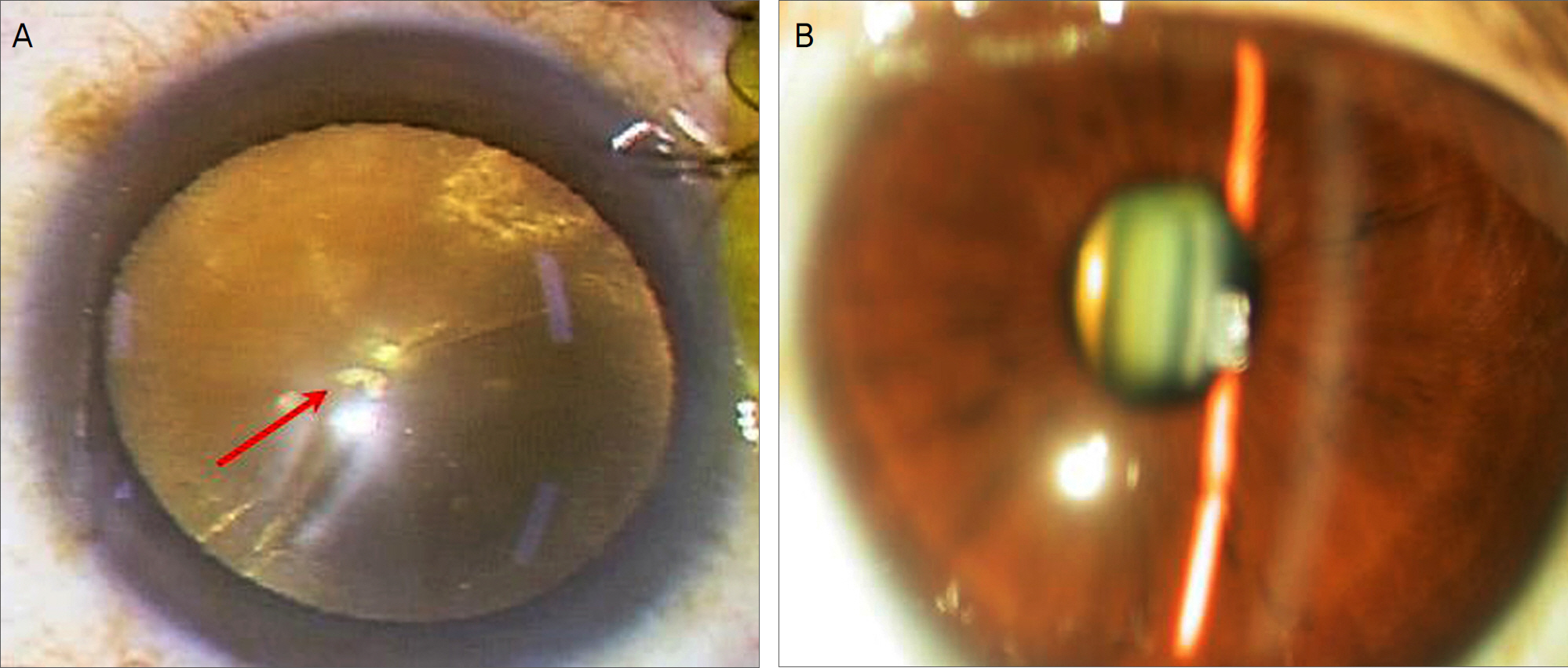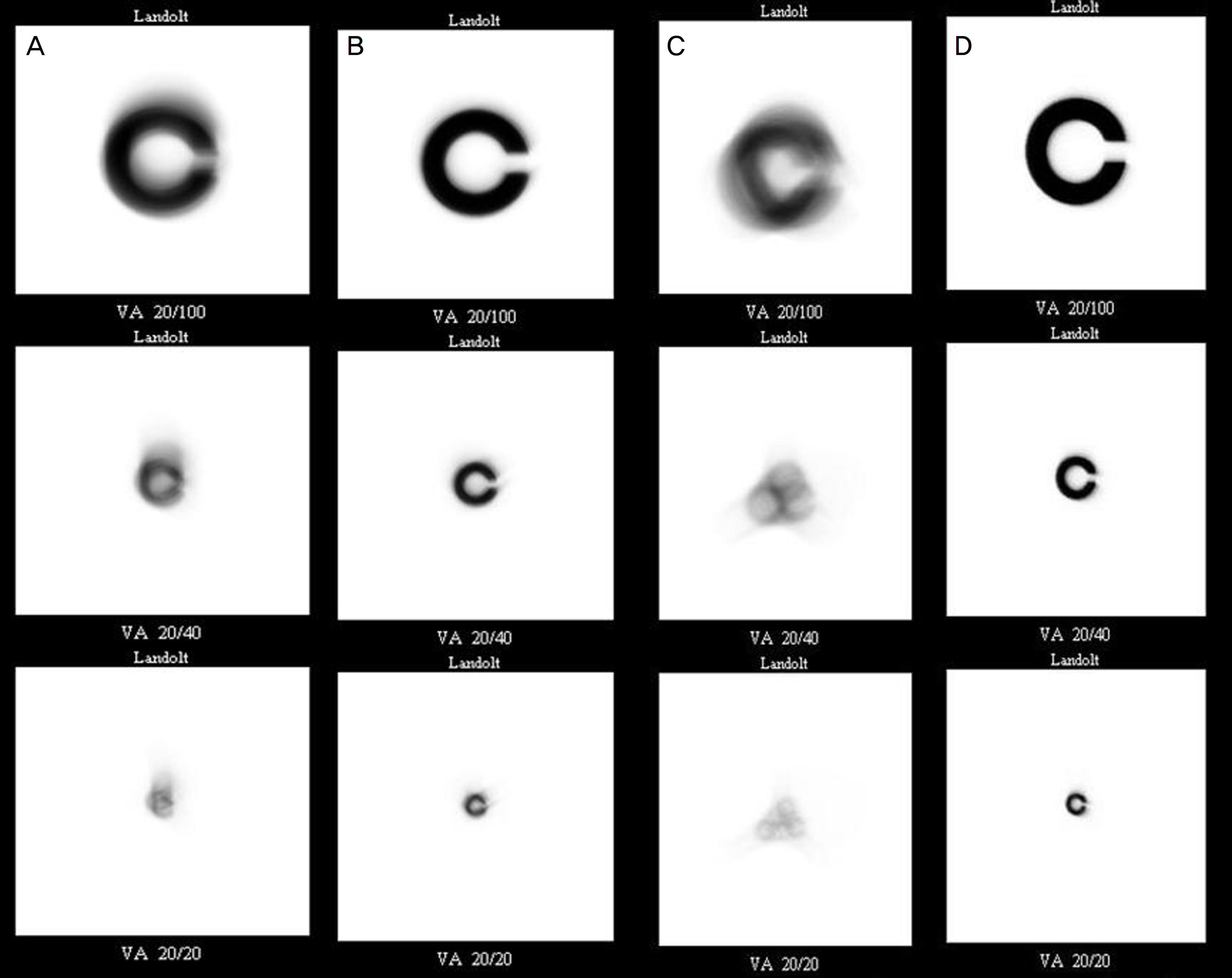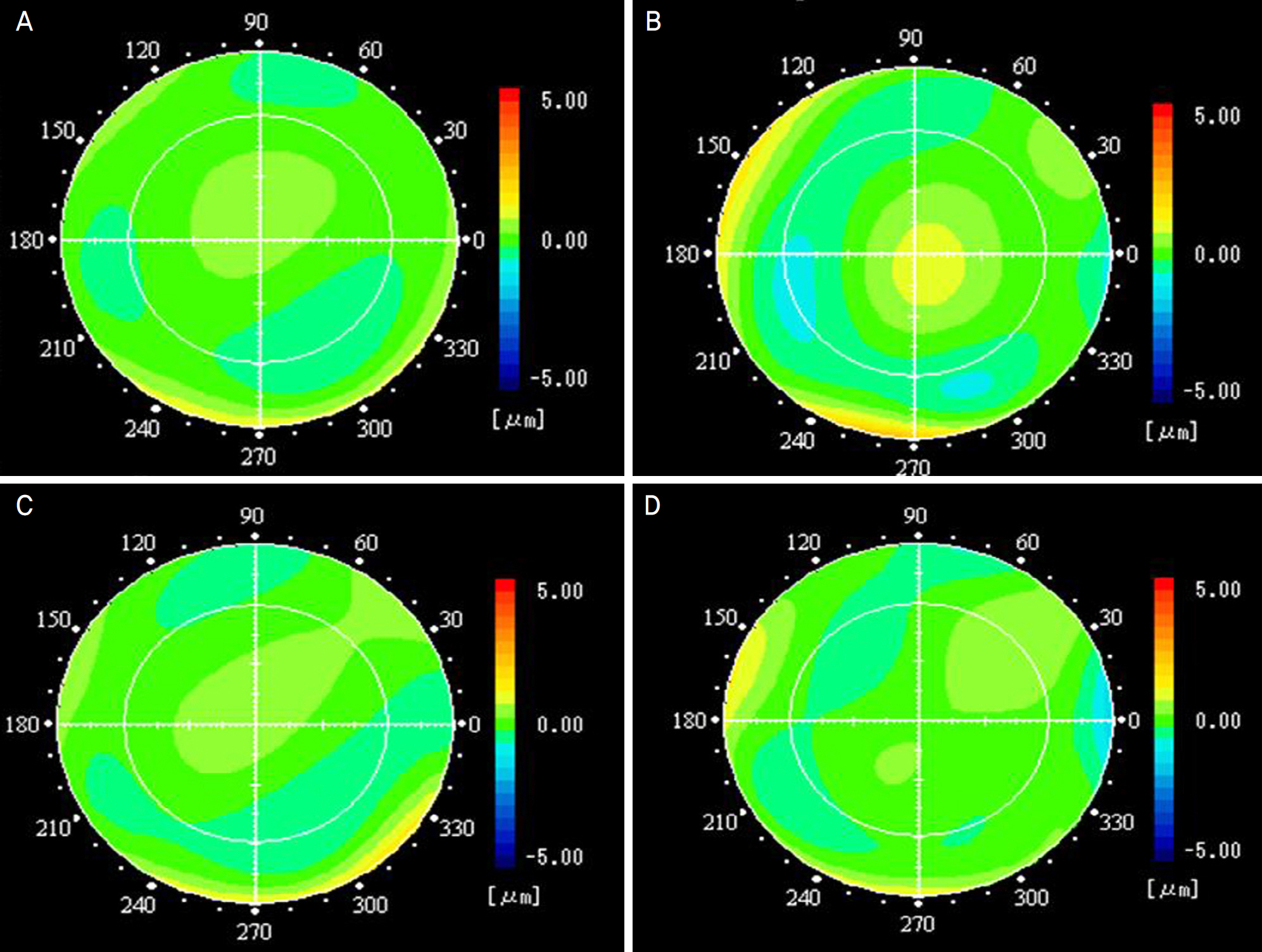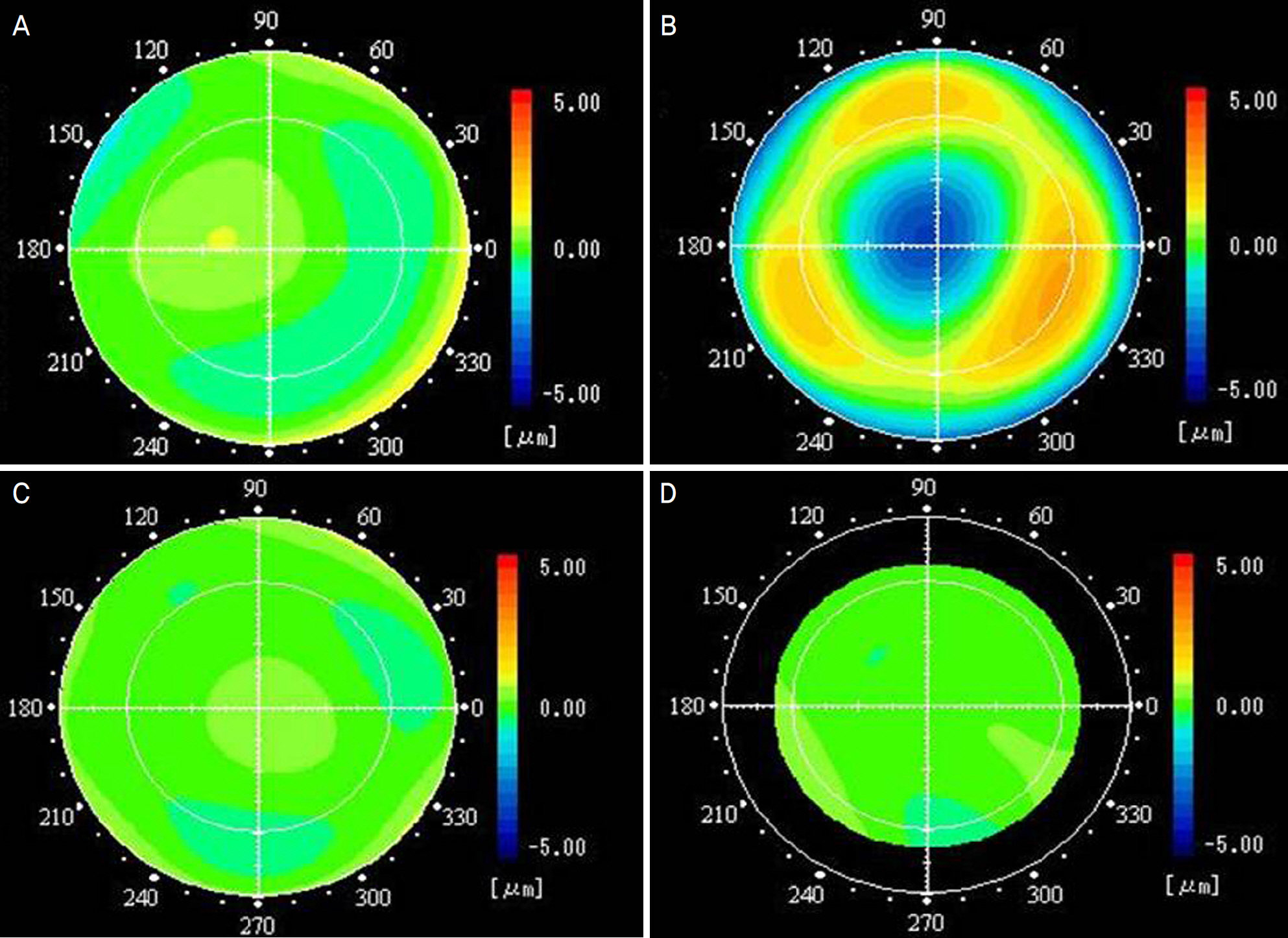J Korean Ophthalmol Soc.
2010 Jul;51(7):1003-1009. 10.3341/jkos.2010.51.7.1003.
Wavefront Analysis of Successful Treatment of Monocular Triplopia After Cataract Extraction: Report of 2 Cases
- Affiliations
-
- 1Department of Ophthalmology, Ilsan Paik Hospital, Inje University College of Medicine, Goyang, Korea. eyedr0823@hotmail.com
- KMID: 2213791
- DOI: http://doi.org/10.3341/jkos.2010.51.7.1003
Abstract
- PURPOSE
To report wavefront analysis of successful treatment of monocular triplopia after cataract extraction.
CASE SUMMARY
(Case 1) A 59-year-old man visited our clinic for a monocular triplopia in his left eye of five years in duration. The best spectacle-corrected visual acuity (BSCVA) was 1.0 in the left eye, and the patient had a mild cortical cataract. The ocular spherical aberration (0.126 micrometer for the 4-mm pupil, 0.351 micrometer for the 6-mm pupil) measured by a Hartmann-Shack aberrometer increased preoperatively, while the corneal spherical aberration was normal. After cataract surgery, the monocular triplopia disappeared, and the ocular spherical aberration decreased. (Case 2) A 38-year-old man visited our clinic for a monocular triplopia in his left eye of a two-year duration. The best spectacle-corrected visual acuity (BSCVA) was 0.3 in the left eye, and the patient had a mild nuclear cataract. The ocular spherical aberration (-0.356 micrometer, -1.343 micrometer) and trefoil aberration (0.199 micrometer, 0.252 micrometer) increased preoperatively, while the corneal spherical and trefoil aberrations were normal. After cataract surgery, the monocular triplopia disappeared and the ocular spherical and trefoil aberrations decreased.
Keyword
Figure
Reference
-
References
1. Coffeen P, Guyton DL. Monocular diplopia accompanying ordinary refractive errors. Am J Ophthalmol. 1998; 105:451–9.
Article2. Bowman KJ, Smith G, Carney LG. Corneal topography and monocular diplopia following near work. Am J Optom Physiol Opt. 1978; 55:818–23.
Article3. Fincham EF. Monocular diplopia. Br J Ophthalmol. 1963; 47:705–12.
Article4. Kuroda T, Fujikado T, Maeda N, et al. Wavefront analysis in eyes with nuclear or cortical cataract. Am J Ophthalmol. 2002; 134:1–9.
Article5. Fujikado T, Shimojyo H, Hosohata J, et al. Wavefront analysis of eye with monocular diplopia and cortical cataract. Am J Ophthalmol. 2006; 141:1138–40.
Article6. Kim A, Bessho K, Okawa Y, et al. Wavefront analysis of eyes with cataracts in patients with monocular triplopia. Ophthalmic Physiol Opt. 2006; 26:65–70.7. Kuroda T, Fujikado T, Maeda N, et al. Wavefront analysis of high-er-order aberrations in patients with cataract. J Cataract Refract Surg. 2002; 28:438–44.
Article8. Fujikado T, Kuroda T, Maeda N, et al. Wavefront analysis of an eye with monocular triplopia and nuclear cataract. Am J Ophthalmol. 2004; 137:361–3.
Article9. Yoon G, Jeong TM, Cox IG, Williams DR. Vision improvement by correcting higher-order aberrations with phase plates in normal eyes. J Refract Surg. 2004; 20:523–7.
Article10. Oie Y, Maeda N, Kosaki R, et al. Characteristics of ocular high-er-order aberrations in patients with pellucid marginal corneal degeneration. J Cataract Refract Surg. 2008; 34:1928–34.
Article
- Full Text Links
- Actions
-
Cited
- CITED
-
- Close
- Share
- Similar articles
-
- The Measurement of the Laser Space in the Planned Extracapsular Cataract Extraction with the PCL
- The Complications of Cataract Extraction
- Clinical Studies on Hyphema in The Complications of Cataract Extraction
- Change in Angle Deviation After Visual Acuity Improvement in Monocular Deviated Patients
- The Change of the Curneal Curvature Before and After Cataract Operation





